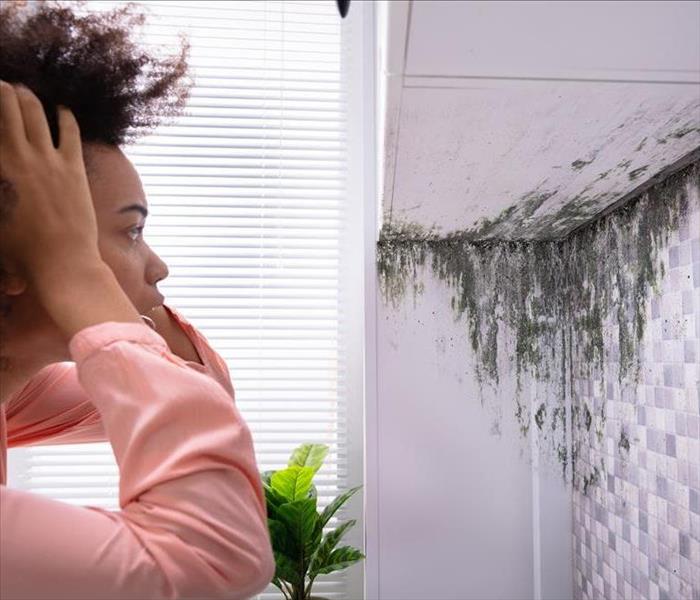Understanding Black Mold and How It Grows
3/23/2022 (Permalink)
No matter how old or new your home in Colorado Springs, CO is, it has the potential for black mold to grow. Since mold spores are everywhere, it often comes down to paying attention to factors and conditions that create the right environment to grow. First, it's important to understand what type of mold it is and how it grows.
What Is It?
Known as Stachybotrys, this mold isn’t always black. Although almost always dark in color, it is known to take on orange, green or brown hues. In some cases, it may have white specks. This particular fungus tends to appear fuzzy and grow to form what appears like a dark stain. This type varies from many common molds in that it produces mycotoxins that attach to airborne spores. Regardless of the type of mold it is, this fungi has a four-phase life cycle.
The process begins with thread-like cells, called hyphae, that absorb the nutrients from organic materials, including dust and wood. As they grow, they being to form into the visible mold body, the mycelium.
Once there is a mycelium, the ends of the hyphae cells start to form spores. This only happens if the right nutrients, warmth, oxygen and light create the ideal environment.
After spores are formed, they become airborne and spread to new areas to begin the process over. Even if they don’t find the ideal environment, they will no longer be dormant if the right conditions present themselves.
Spore germination happens when those spores find the right environment to begin the process over again. Once there are signs of Stachybotrys growth, extra precautions need to be taken during the mold cleanup process.
It is recommended to contact a professional mold remediation company to ensure proper cleanup and eliminate the mold’s lifecycle from continuously repeating itself.
Why Does It Grow in Homes?
Every home potentially has the right nutrients and temperature for black mold to grow. When moisture is introduced into the equation, it elevates the chances of mold forming. Within 48 hours of a water leak, the fungi may already be in the third stage of their lifecycle. If it feels like you are constantly dealing with poor ventilation, high humidity or other water issues, there is a greater chance of a mold problem.
Although it is not possible to eradicate all mold spores, there are ways to minimize the chances of them growing and spreading.
- Maintain a humidity level below 60% inside the home.
- Use air conditioners and dehumidifiers to reduce humidity levels.
- Ensure drip pans are dry and drain lines are properly flowing.
- Insulate windows, walls and floors to minimize condensation.
- Clean up any excess moisture immediately.
- Ensure leaks are quickly addressed.
- Run fans and keep interior doors open to enhance air circulation.
- If planning to repaint, mold inhibitors can be added to the paint.
Finding black mold in your home is never pleasant and may make people wonder how it even began to form. Understanding that mold is everywhere and the conditions it thrives in makes it easier to avoid it from spreading.




 24/7 Emergency Service
24/7 Emergency Service
